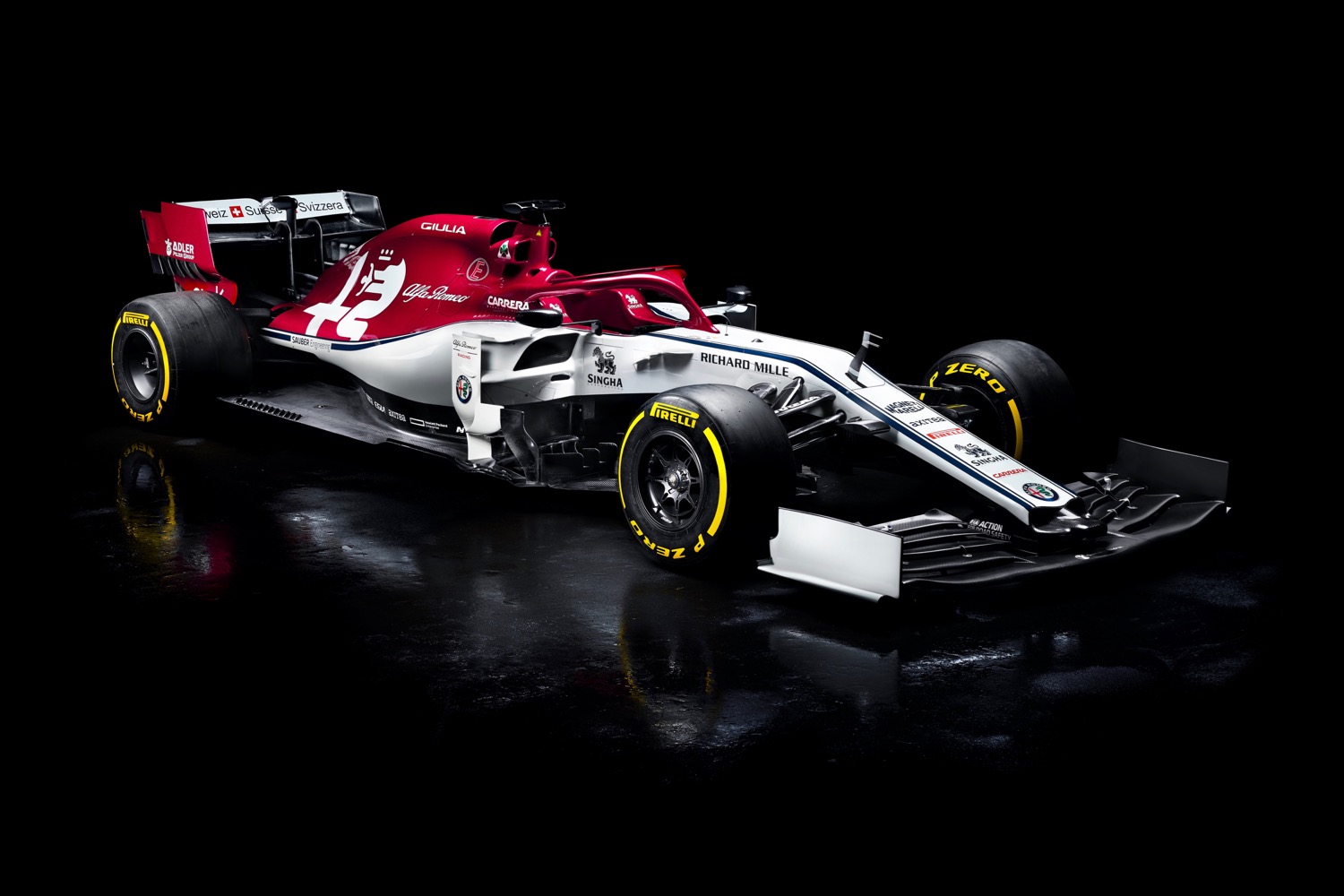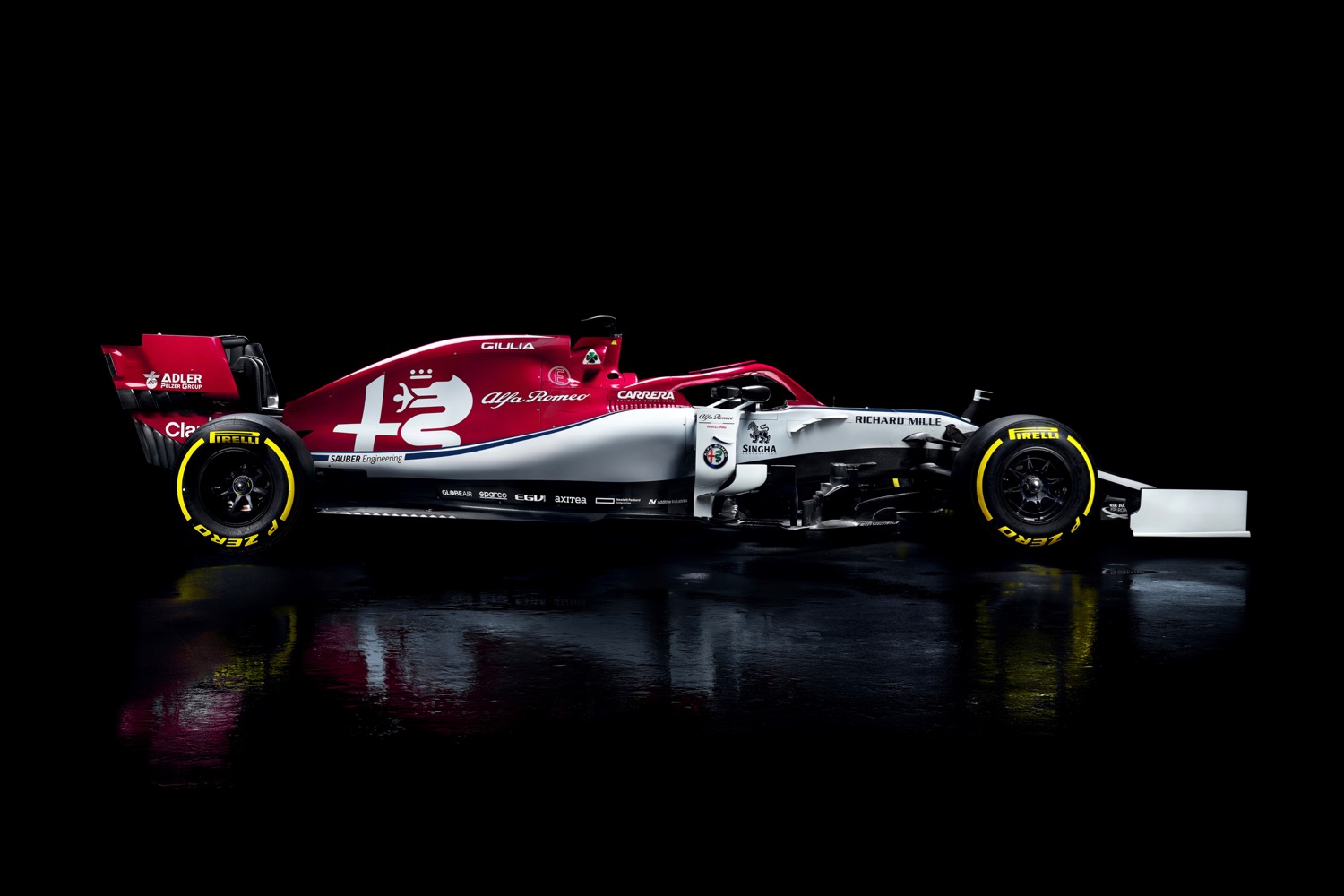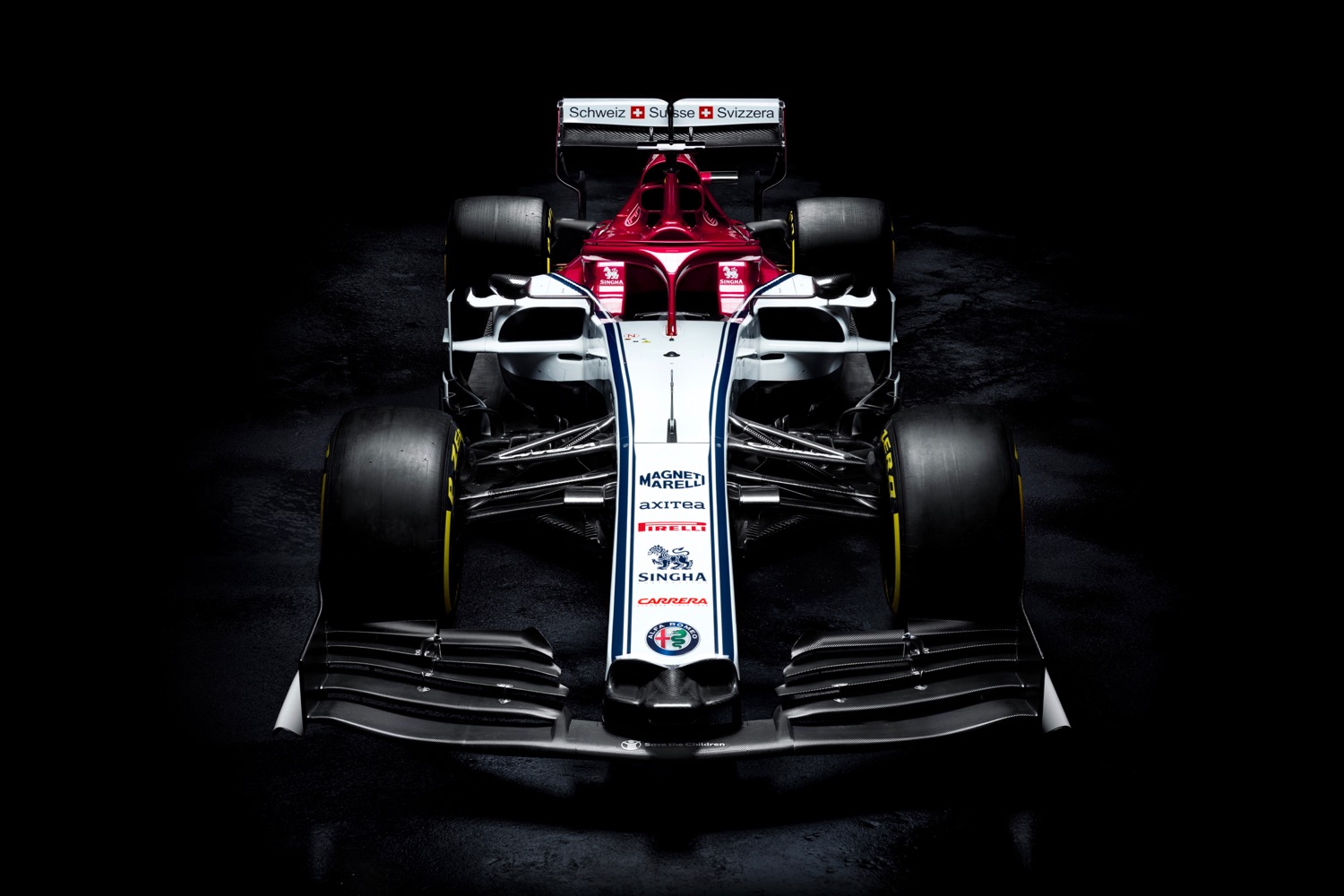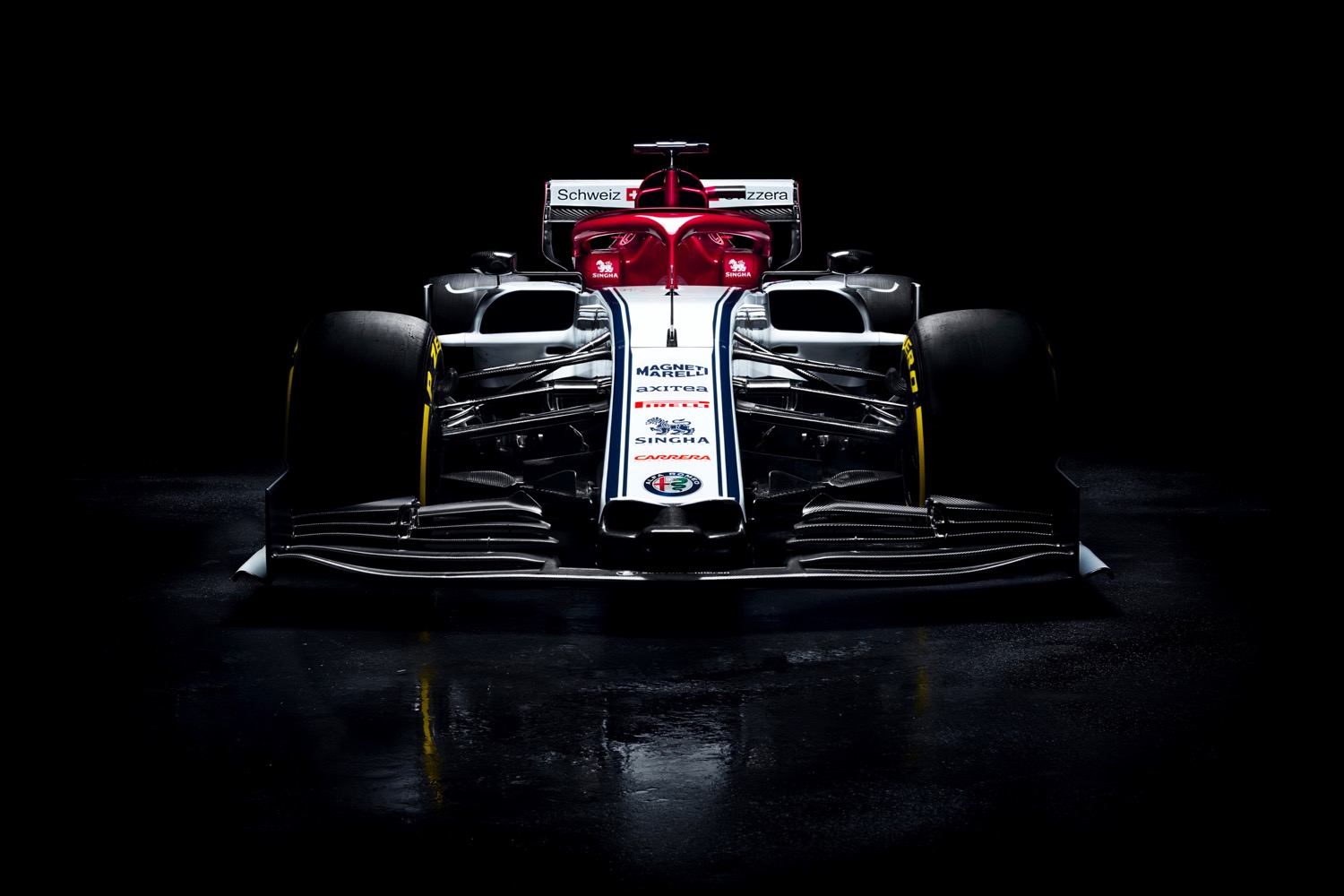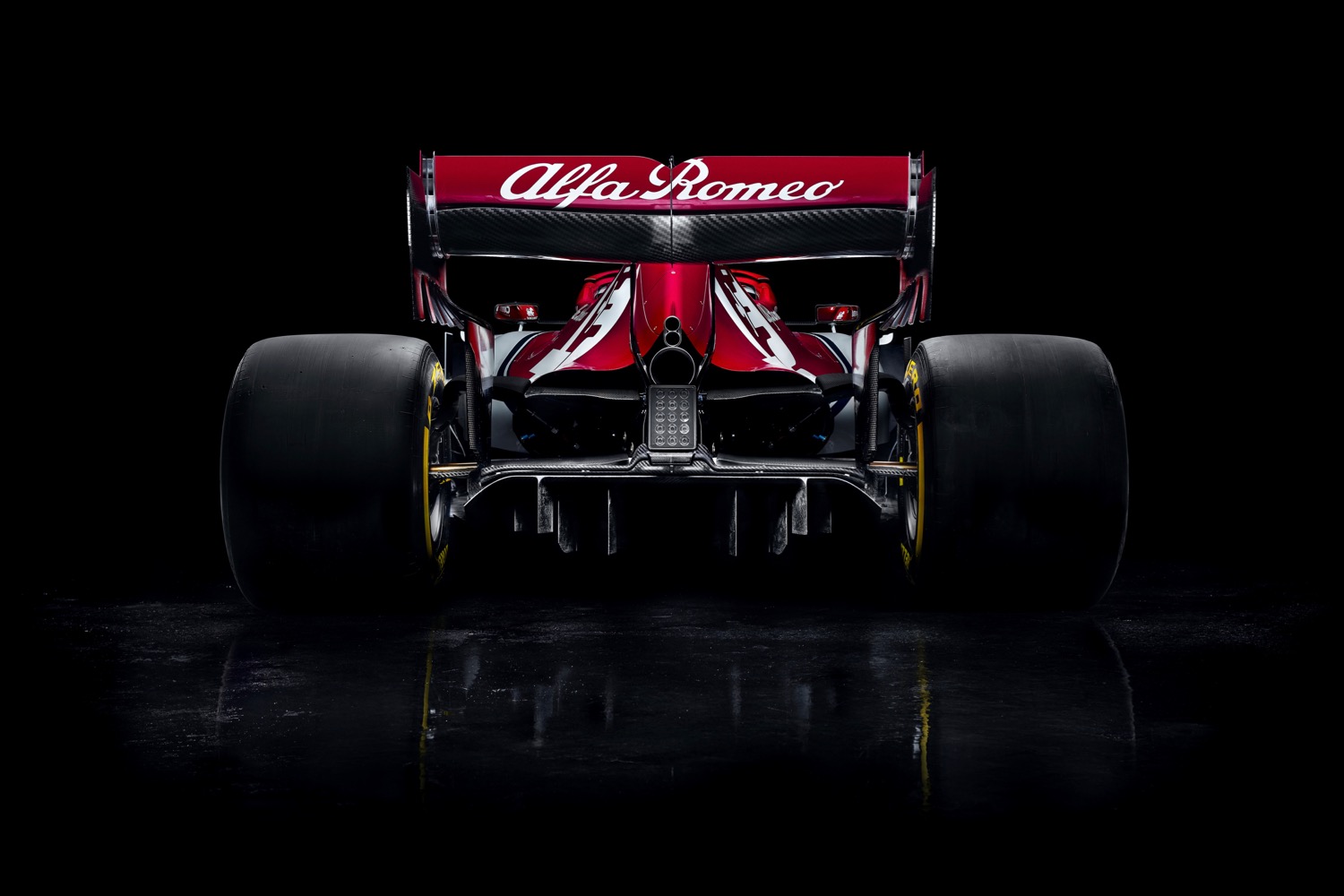Alfa Romeo has one of the most impressive motor-sports pedigrees of any automaker, but decades away from top-tier racing eroded its credibility. Alfa sought to recapture past glory with a return to Formula One in 2018, and it’s doubling down on its commitment to the world’s most prestigious racing series for 2019.
With testing for the 2019 F1 season about to get underway, Alfa unveiled this year’s race car, dubbed the C38. Like last year, the car is uses a Ferrari powertrain, or “power unit,” as they are referred to in F1. All F1 cars use a 1.6-liter turbocharged V6 engine teamed with a hybrid system that can harvest electric power from the brakes or exhaust. The C38 leaves even the most expensive supercars in the dust.
Alfa returned to F1 as the title sponsor of the Swiss Sauber team, but for 2019 the Italian automaker doesn’t want to share the spotlight. The Sauber name has been dropped; the team now calls itself Alfa Romeo Racing. However, the “structure, ownership, and management” of the team remain unchanged, according to Alfa. So while some teams, like Mercedes-Benz, Ferrari, and Renault, are run by their respective automakers, Alfa Romeo Racing is still basically a marketing exercise.
The team may still be independent, but it will continue to function as a B-squad for Ferrari, just as it did in 2018. In addition to using Ferrari power units, Alfa is being used to field up-and-coming Ferrari drivers, who can gain experience in F1 before joining the Ferrari team. In 2018, as Alfa Romeo Sauber, the team ran Charles Leclerc, who joins the Ferrari team for 2019. This season, Alfa’s driver lineup includes Antonio Giovinazzi, a Ferrari protege who is looking to follow in Leclerc’s footsteps.
The team’s other driver is Kimi Raikkonen, a veteran driver who vacated his seat at Ferrari to make way for Leclerc. Switching to Alfa is effectively a demotion for Raikkonen, who won the F1 drivers’ championship in 2007. But it will also allow the popular driver, known as “The Iceman” for his cool demeanor, to stave off retirement and finish off his career at the team where it started in 2001.
Alfa Romeo has a long racing history that stretches back long before the first F1 championship. Enzo Ferrari got his start running Alfa’s Grand Prix racing team in the prewar years when Alfa race cars claimed many victories. Alfa drivers won the first two F1 championships, in 1950 and 1951. The Italian automaker continued in F1 as both a team and an engine supplier into the 1980s. A new line of performance road cars provided the impetus for a return.
But even with that pedigree and a world-champion driver in the lineup, don’t expect much from Alfa Romeo Racing in 2019. The team’s partnership with Ferrari means it will continue playing second fiddle to its corporate cousin. Despite the branding of a well-known automaker, the team also lacks the resources to compete at the front of the field. In 26 years of racing in F1 as Sauber, it has only one a single race and that was with the full technical and financial might of BMW behind it.
The nature of F1 means that only a handful of teams can compete for wins and championships. Since the current hybrid-powertrain rules took effect in 2014, the things have been even more skewed, with Mercedes-Benz handily winning the drivers’ and constructors’ championships every year since. With even large factory-run teams struggling to break Mercedes’ iron grip, it’s unlikely that Alfa Romeo will return to the top step of the podium anytime soon.
